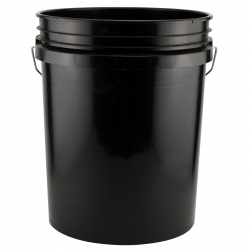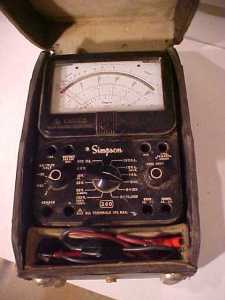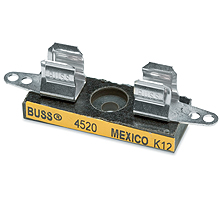Originally Posted January 4, 2013:
November 7, 1983 I walked into the electric shop from the Power Plant Parking Lot with Bill Rivers. Bill was an electrician that I had been carpooling with off and on for almost a year. I remember walking in the door and the first thing I noticed were two guys leaning against the counter by the coffee pot that I hadn’t seen before. They looked like a couple of Electrical Contract hands.
When I came in the door, Bill told them that I was the new electrician. They both looked very surprised. The tall one told me that his name was Art Hammond and that this was his first day as an electrician in the shop also. He had just been hired. The shorter guy introduced himself as Gene Roget (it is a French name pronounced “Row jay” with a soft J). I could tell by his shock and look of disappointment at my young appearance and obvious lack of experience that he had been expecting to be hired permanently along with Arthur.
My new foreman was Charles Foster, the person that had asked me to think about becoming an electrician in the first place. Charles was a calm mild mannered person that made it clear to me the first day that I could call him Charles, or Foster or even Chuck, but don’t call him Charlie. Ok. I made a note of that in my mind….. When the need arises to really irritate Charles, I should remember to call him Charlie. — Just a side note… That need never did arise. I did think it was funny that I had referred to my previous foreman Larry Riley as my Foster Father, and now I actually had a Foster for a Foreman. The electric shop had a short Monday Morning Safety Meeting and then I officially began my 18 year career as an electrician.
I could go on and on about how Charles Foster and I became the best of friends. I could fill up post after post of the things we did and the hundreds of conversations we had each day at lunch…. and um…. I suppose I will in good time. Today I just want to focus on what we did the first day. The first thing Charles told me after making it clear that “Charlie” was not the way to address him, was to tell me that he believed that the way I would become a good electrician was for him to not tell me much about how he would do something, but instead, he would let me figure it out myself. And if I made a mistake. That was all right. I would learn from it.
I really hated making mistakes, and I wished at the time that he would let me follow him around telling me his electrical wisdom. Finally, in my mind I thought, “Ok. If Charles didn’t mind my making mistakes, then I will try not to mind it either.” It was hard at first, but eventually, I found that making mistakes was the highlight of my day sometimes… Sometimes not… I’m sure I will talk a lot about those in the coming months.
I followed Charles up to Bill Bennett’s office. He was our A foreman, and there was a cabinet in his office where he kept all the new electrician tools. I was given a used black five gallon bucket and a tool pouch to carry my tools. Like my first day as a summer help, I had to learn the name of a lot of new tools that day. There were crimpers, side cutters, Lineman’s Pliers, strippers and Holding Screwdrivers. I was given a special electrician pocket knife and was told that I would have to keep it very sharp. I had all sizes of screwdrivers and nut drivers. I put all the tools including the tool pouch into the black plastic bucket.
Bill Bennett was a tall very thin black man. He was a heavy smoker. This showed on his face as he looked older than I thought he really was. He spoke with a gruff voice from years of smoking. He was a very likable person (like most Power Plant Men). He told me that they had tried really hard to get me in the electric shop because the two men in the corner offices really didn’t want me to move off of the labor crew. He explained that I owed my new career to Charles Foster who gallantly went to bat for me. I told him I was grateful.
I was also given a Pocket Protector and a pair of small screwdrivers (one a philips screw driver). Charles explained that I would probably use these small screwdrivers more than any of the other tools. I also was given a small notebook and a pen. All of this went into my pocket protector. Which went into the vest pocket on my flannel shirt.

Our Pocket Protectors were freebies given to us by vendors so they would have advertisements on them like these
We went back down to the electric shop and Charles introduced me to Gene Roget again and Charles asked Gene if he would help me organize my tools and teach me some of the basics around being an electrician. Gene said that the first thing I needed to do was to lubricate my new tools. It just doesn’t do to have tools that are stiff. So, we worked on lubricating them and we even went down to the machine shop to get some abrasive paste that we worked into the tools to loosen them up. Gene took his side cutters and threw them up in the air and as they flew up, they rapidly opened and closed making a rattling sound. He caught them as they came down as if they were tied on his hand like a YoYo.
I worked the tools back and forth. Lubricating them and rubbing the abrasive paste in the joint. I had no coordination, so when I would try throwing my pliers in the air like Gene did, they would end up on the other end of the workbench, or across the room. So, I didn’t try it too often when others were around where I might injure someone. I thought. I’ll work on that more when I’m alone or just Gene is around. He had good reflexes and was able to quickly dodge my miss-thrown tools.
After Lunch Charles said that we had a job up at the coalyard that we needed to work on. He told me to grab my tool bucket and the multimeter from the cabinet. The electricians referred to it as the “Simpson”.
This was before each of us were issued our very own digital Fluke Mulimeter a few years later. I’m sure the old electricians are chuckling to remember that we used to use these old Multimeters. Charles explained to me that when you are checking voltage with the meter, that after you turn the dial to check voltage, always touch the two leads together to make sure the meter doesn’t move before touching the electric wires. This is done because if something happens that causes the meter to still be on “Resistance”, then when you check the voltage, the meter or the leads could explode possibly causing an injury. I had observed the electricians in the shop doing this back when I was a janitor, and now I knew why.
Charles explained that we needed to find out why the heater in the small pump room on the northwest corner of the dumper wasn’t running. So, we went to coalyard and found the space heater mounted along the wall. We tested it to make sure it wasn’t running. After checking the circuits with the multimeter on a panel on the wall, we found that we needed to replace a small fuse block because it had become corroded from all the coal dust and moisture.
I had seen electrical he-men go up to a panel and hold a screwdriver in their hand out at arms length and unscrew screws rapidly, one at a time. Bill Rivers had been doing that up on the precipitator roof when I was working with him while I was still on the Labor Crew. He could unscrew screws from a terminal block faster than I could unwrap Hershey Kisses.
So, when Charles told me to remove the fuse block from the panel, I thought this would be an easy task. I pulled out a screwdriver from my handy dandy tool bucket and with one hand holding the screwdriver, and the other hand steadying it by holding onto the stem of the screwdriver I moved toward the panel. Charles stopped me by saying something like: “Rule number one. Never use two hands. Especially when you are working on something hot.” Ok. I see.. If one hand is touching the metal screwdriver, and I come into contact with the screw which is electrified, then… um… yeah. Ok. I dropped one hand to my side and proceeded to remove the fuse block. That other hand remained at my side for the next 18 years when working on something hot (something is hot when it has the electricity turned on).
I explained above that I was pretty uncoordinated when it came to flipping my side cutters up into the air trying to act impressive like I knew what I was doing. Well. I couldn’t hold a screwdriver steady for the life of me. I tried to match up the head of the screwdriver with the slot in the screw, but I was pretty wobbly. It was kind of embarrassing. The truth had come out. This guy can’t even hold a screwdriver still. How is he ever going to become a real electrician?
Using all my concentration, I fumbled about and began working the screw out of the fuse block, when suddenly the screwdriver slipped slightly and Pow! Sparks flew. I had shorted the screwdriver between the screw and the hot post on the fuse block. There was a quick flash of light and a loud pop. Geez. The first time I’m working on something, what do I do? I blew it….. literally.
Well. Charles pointed out. The electricity is off now. Go ahead and change out the fuse block, then we will find out where the source of power is for it. So, I changed it out…. Feeling a little down that my new screwdriver now had a neat little notch on the blade where the electricity had melted off a corner of my screwdriver. We found the breaker that had been tripped in a DP Panel (which stands for Distribution Panel) in the Dumper Air Handler room and turned it back on. We checked the heater and it was working.
At the end of the day, when Bill Bennett came down to the shop to see how my first day went, Charles told him that I had jumped right into it and already had a notch in my screwdriver to prove it. Both Bill and Charles were good-natured about it. I filled out my timecard which told a short story about my first adventure as an electrician.
As I walked to the parking lot with Bill Rivers to go home, I was thinking that even though I had been full of nerves all day, this had to be one of the most exciting days of my life. I was actually one of the electricians now. I had the feeling that somehow something was going to happen and they were going to tell me that they made a mistake and that I would have to go back to the labor crew. That was a feeling that haunted me for about 3 months after moving to the electric shop.
Comments from the original post:
-
Your memory still amazes me. It’s like you kept a copy of every day’s time card. I’ll bet your time cards take up a whole room at Sooner!
Great article. I still have some of the tools I was given on my first day in the Results Dept. at the Horseshoe Lake Plant in June, 1970 (don’t tell the Evil Plant Manager).
- NEO January 5, 2013
I’ve got a few screwdrivers like that myself. Goes with the territory. Good post





Reblogged this on By the Mighty Mumford and commented:
MY BROTHER NATE GOT MY DAD’S TOOLBOX—WITH ALL THE INERESTING STUFF IN IT.
LikeLike
Classic:
“The first time I’m working on something, what do I do? I blew it….. literally.”
I really DO need to stop by here more often.
Great writing, partner. As always…
Your “Spider” post is still my favorite, but this one was awfully good.
😉
LikeLike
Thanks JTR for your kind words,
Wait until next year when I tell the story of Spider Wars 2! It was a much bigger battle than the first one. Luckily during that battle I wasn’t alone.
Kev
LikeLike